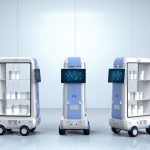Tesla is evaluating an integration of Apple CarPlay software in its electric vehicles, signaling a noteworthy shift in its longstanding approach to vehicle infotainment. Internal testing is underway, according to sources familiar with the matter, as Tesla is aiming to broaden its appeal among buyers who value seamless smartphone connectivity. If fully adopted, this move may alter the choices of consumers who see CarPlay compatibility as an important factor in purchasing decisions. Some industry analysts expect the upcoming availability of Apple’s software to impact how Tesla positions its in-car technology, bringing its features more in line with other premium automakers. Tesla’s response comes at a time when digital dashboard experiences are influencing buyer preferences and prompting automakers to reconsider their technology partnerships.
Reports from earlier years consistently highlighted Musk’s and Tesla’s resistance to adopting Apple CarPlay, with arguments centered around control of the user experience and data privacy. Tesla instead focused on its proprietary in-house software as a brand differentiator, positioning it as more advanced than competitors’ offerings. While users have long requested CarPlay support, Tesla previously claimed its system offered better navigation, streaming, and vehicle monitoring, eschewing Apple and Android platforms. The current move suggests a shift influenced by both evolving consumer expectations and a changing competitive landscape, hinting at a reassessment of Tesla’s technology strategy.
How Will Tesla Integrate CarPlay With Its System?
Unlike the typical Apple CarPlay setup, which often replaces the entire infotainment screen, Tesla plans a more limited integration. The CarPlay interface is expected to appear within a window on the existing Tesla system rather than fully taking over the dashboard display. This strategy preserves Tesla’s signature interface, including features like Full Self-Driving visualizations, ensuring its proprietary experience remains central to the vehicle. Wireless functionality is also anticipated, which matches offerings from other luxury brands. Sources note that the timeline for public release is not final and may be adjusted based on ongoing evaluations.
What Prompted Tesla’s Shift Towards Apple Software?
Tesla’s reluctance to adopt Apple CarPlay stems from competitive tensions and concerns about user experience. Elon Musk has previously criticized Apple’s App Store model and the poaching of Tesla engineers during Apple’s foray into automotive development. However, as Apple abandoned its plans to manufacture its own vehicle, and as collaborations between Musk’s ventures and Apple deepen in other areas, the relationship appears to be thawing. Because a significant portion of vehicle buyers are drawn to robust in-car smartphone integration, Tesla is reassessing its approach to better meet buyer expectations.
How Might Existing Customers Respond to This Integration?
Owners who have favored Tesla’s proprietary software for its design and functionality may have mixed feelings about introducing CarPlay. Nevertheless, consumer surveys point out that a lack of CarPlay is a deal-breaker for many, leading Tesla to weigh broader market demands. A spokesperson indicated the company is considering customer preferences closely:
“We understand that seamless connectivity is important for our drivers.”
The manufacturer is mindful that adaptation may be necessary to remain competitive, particularly as rivals already offer robust Apple and Android integrations.
Apple’s retreat from vehicle manufacturing and new cooperative ties between the companies have contributed to this policy reconsideration. Elon Musk signaled openness to renewed collaboration, emphasizing,
“Our focus is delivering the best driving experience possible, and that means listening to our customers.”
Market research also emphasizes the correlation between infotainment integration and vehicle sales, suggesting Tesla’s move is calculated to capture additional market segments. Other automakers with CarPlay support have reported increased customer satisfaction scores, while their technology investments continue to emphasize flexibility and user choice.
Tesla’s decision to test CarPlay support reveals shifting priorities as consumer preferences shape the next phase of in-car innovation. Buyers now expect a flexible, smartphone-friendly experience in the vehicles they purchase, making infotainment capabilities an important differentiator. For Tesla, maintaining its distinct interface while enabling popular third-party platforms could help it appeal to a broader user base. For car purchasers, evaluating which systems suit their needs—whether that be Tesla’s software or CarPlay—is an increasingly relevant factor. Anyone considering a new vehicle may find it helpful to check both current and upcoming infotainment support as a key element in their buying decision.
- Tesla is internally testing Apple CarPlay integration in its vehicles.
- The planned approach maintains Tesla’s core infotainment features.
- Consumer demand and shifting tech alliances influenced Tesla’s reevaluation.








